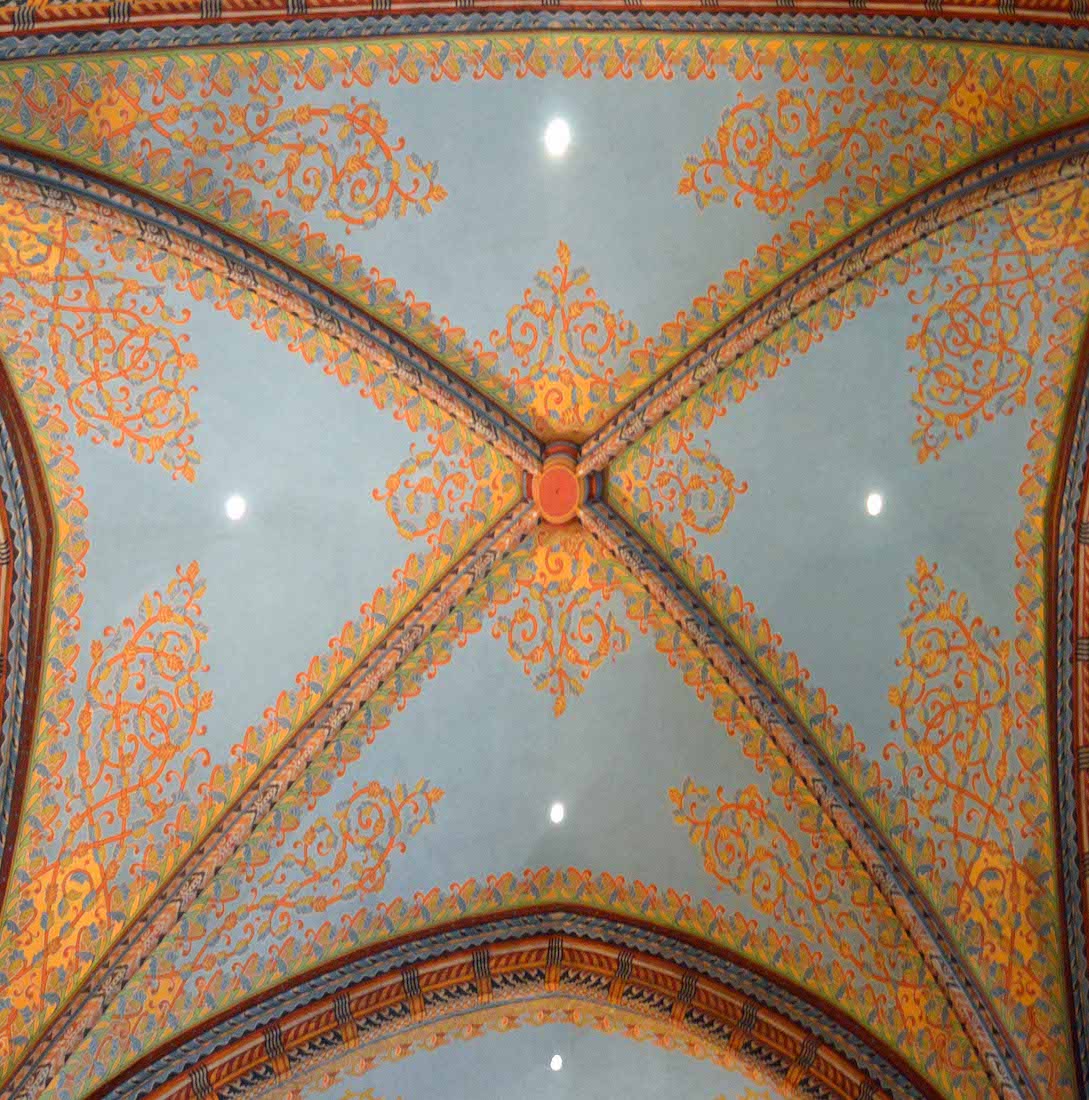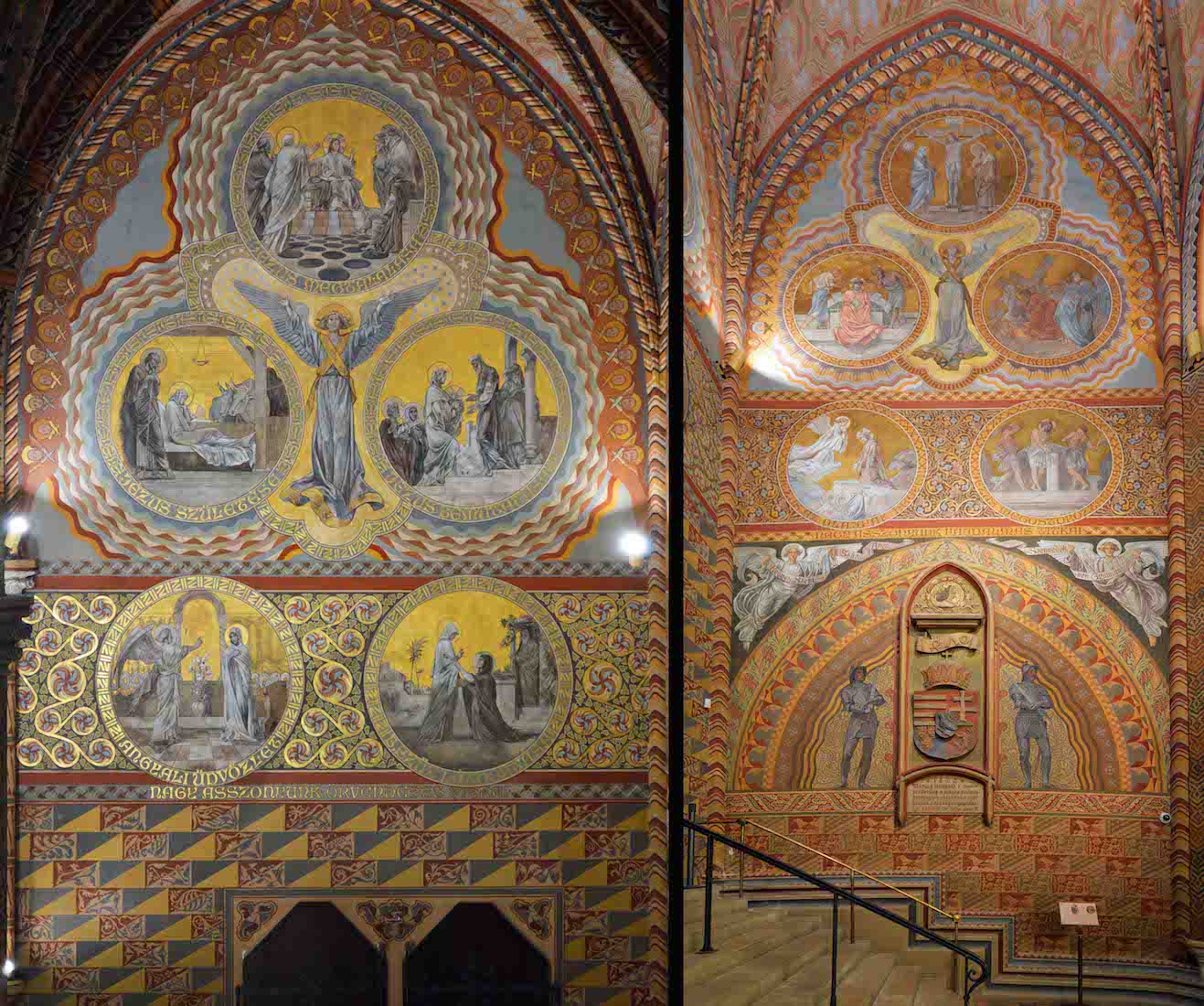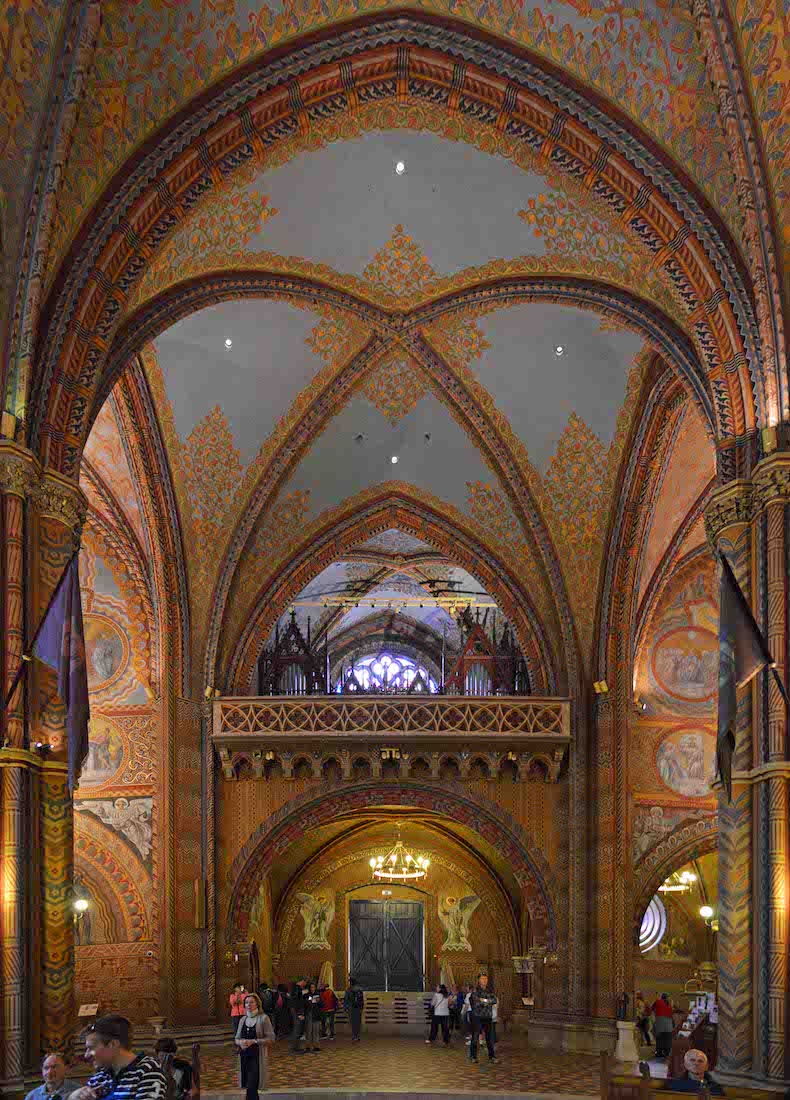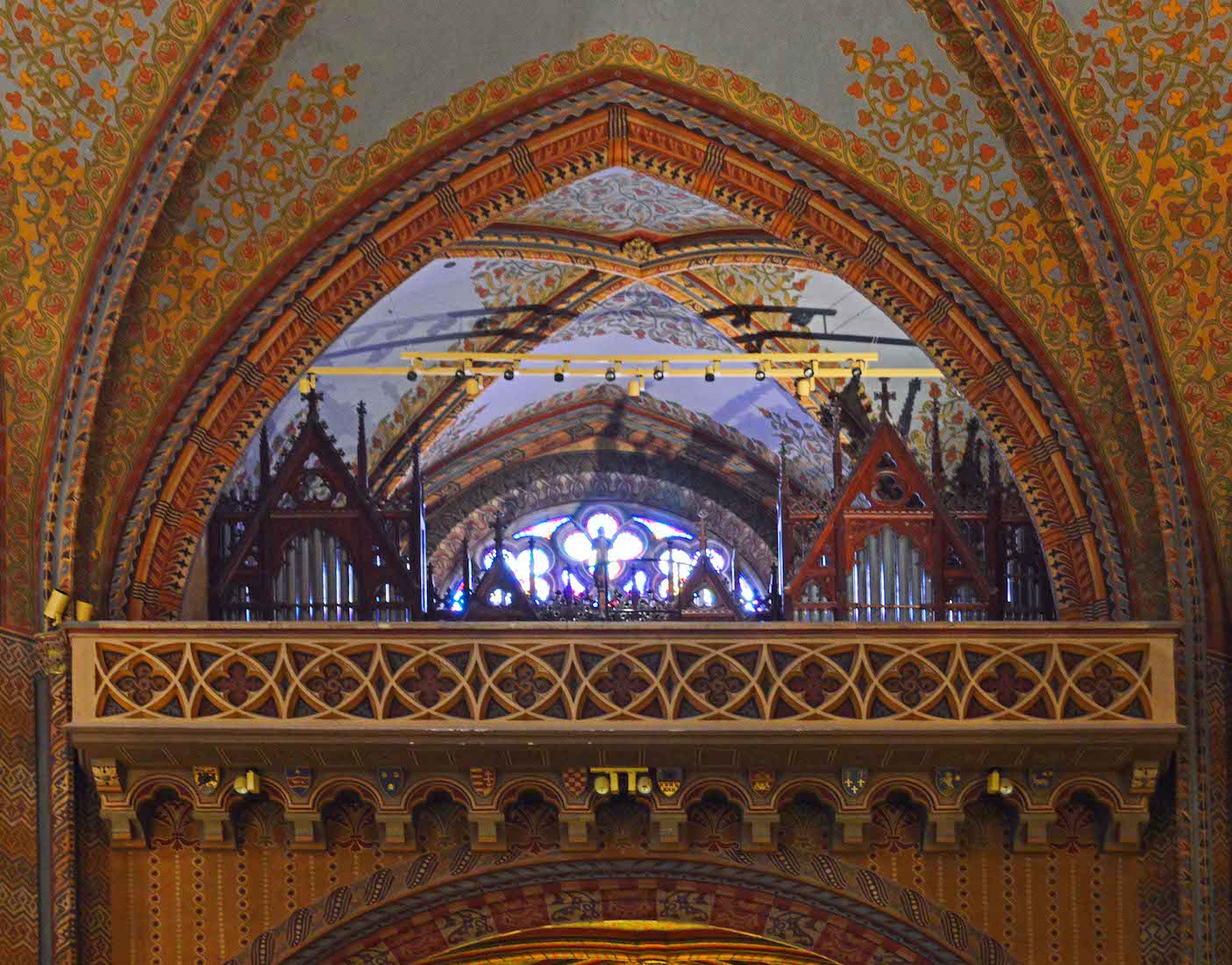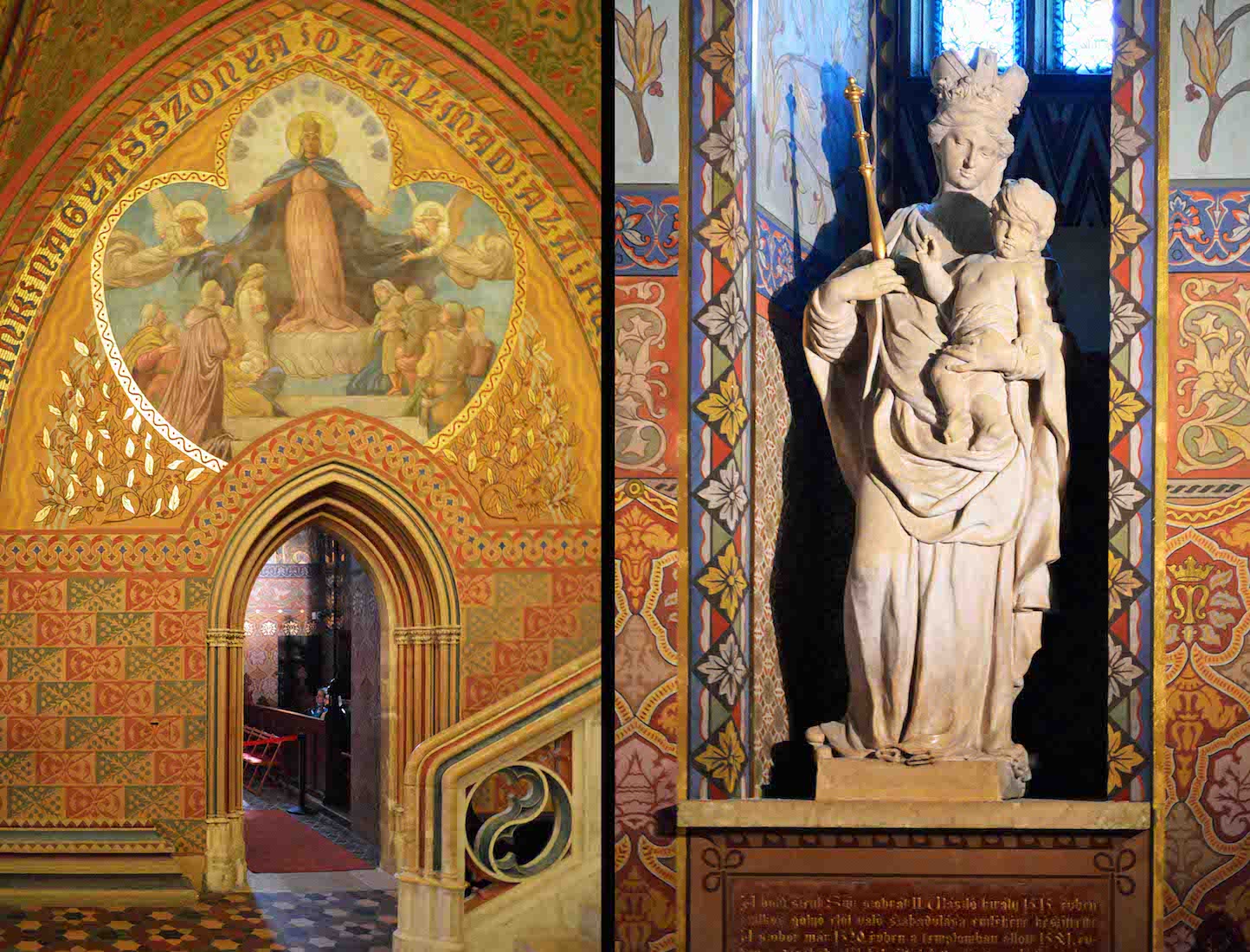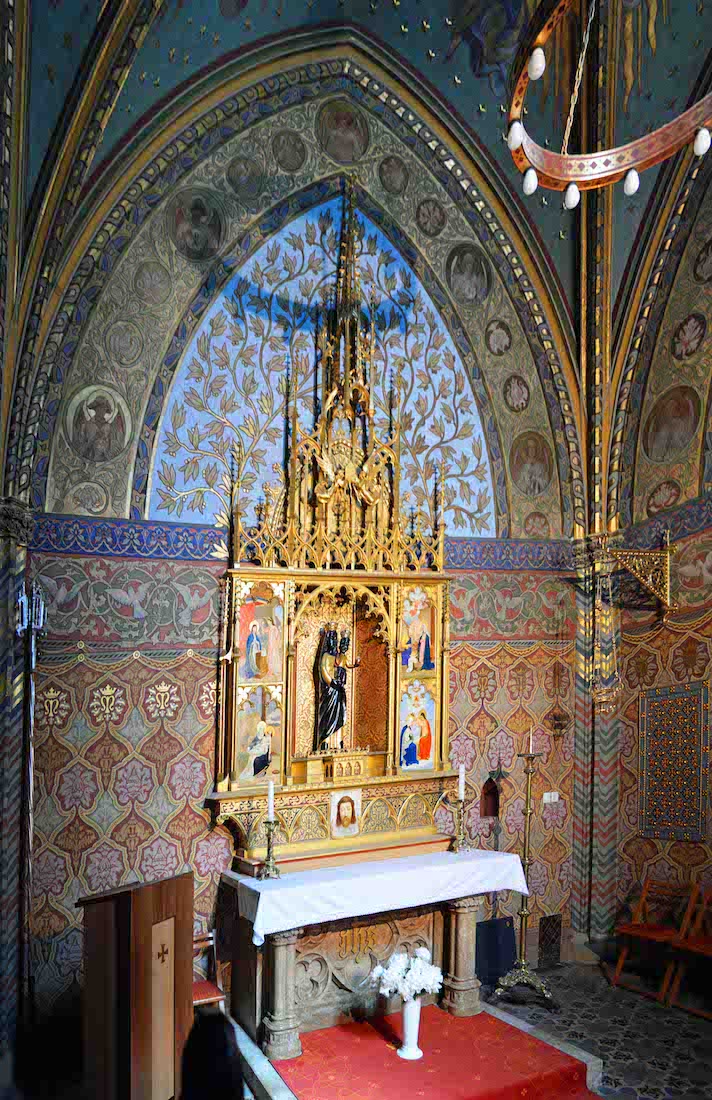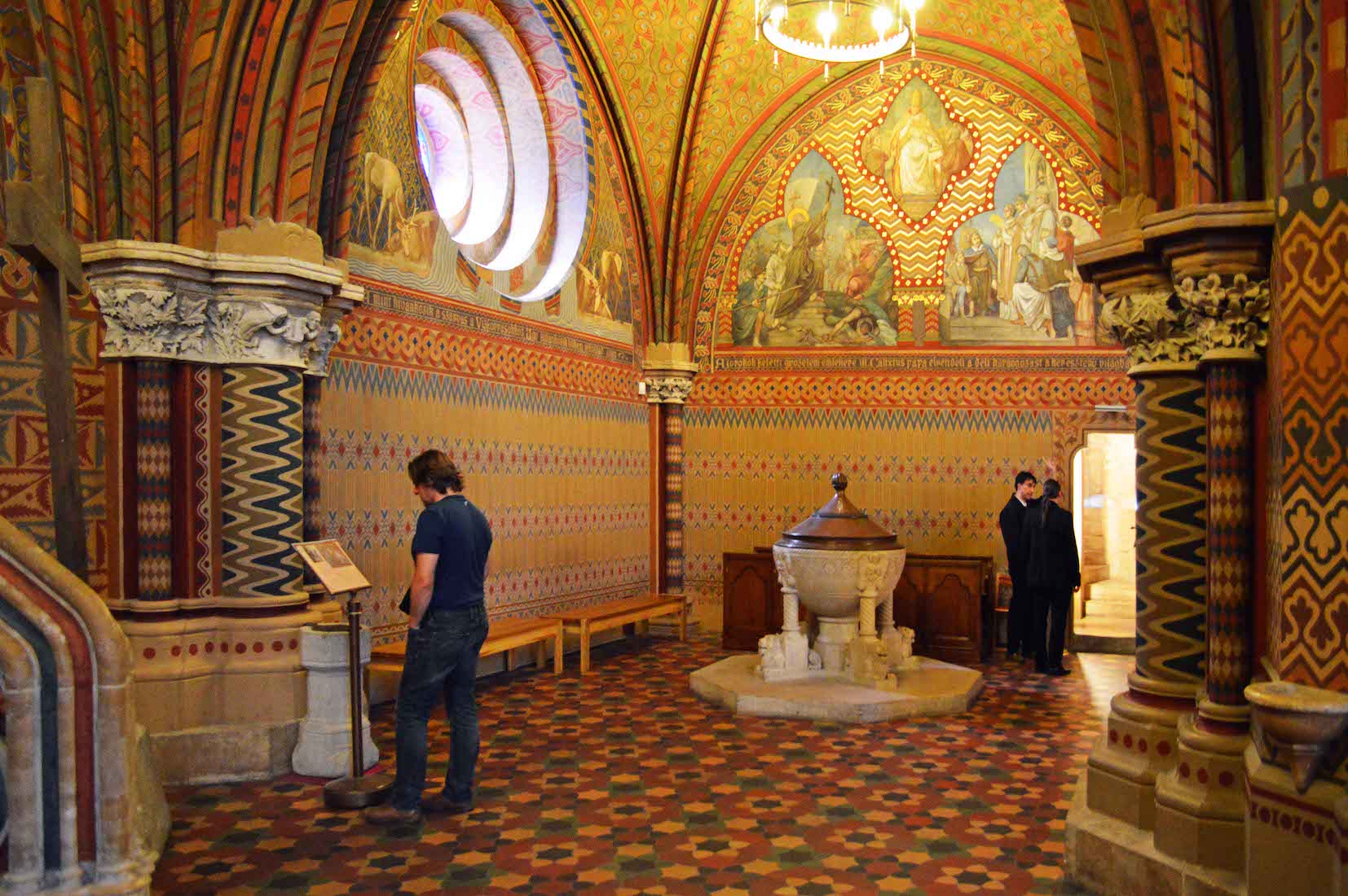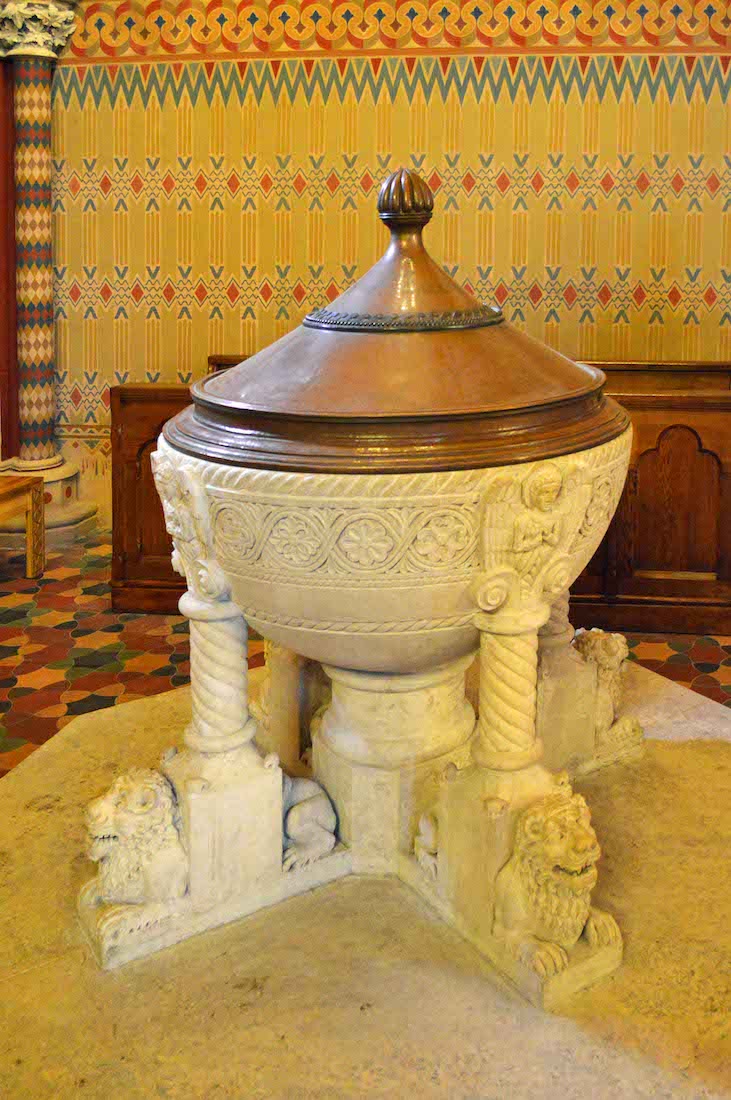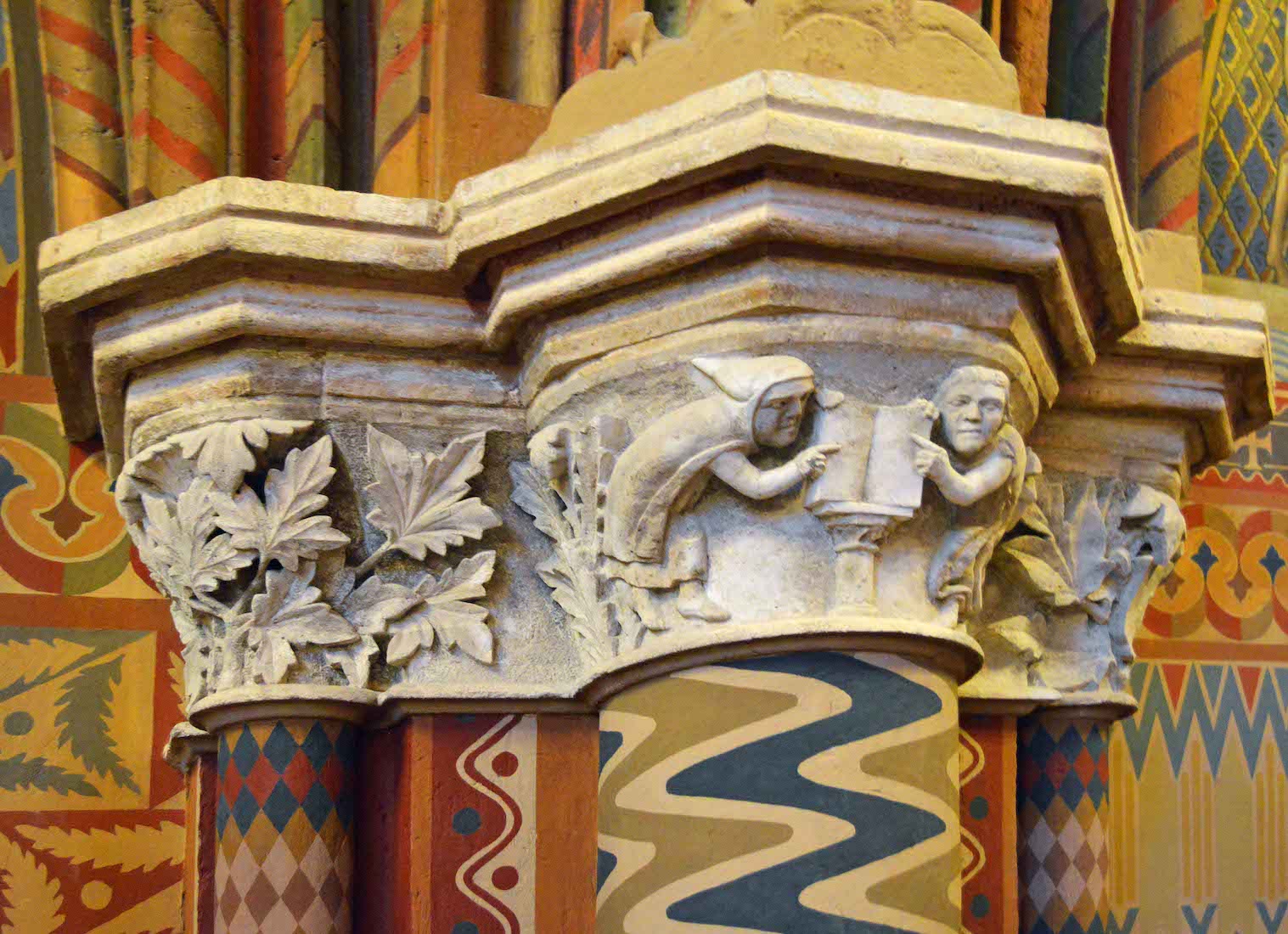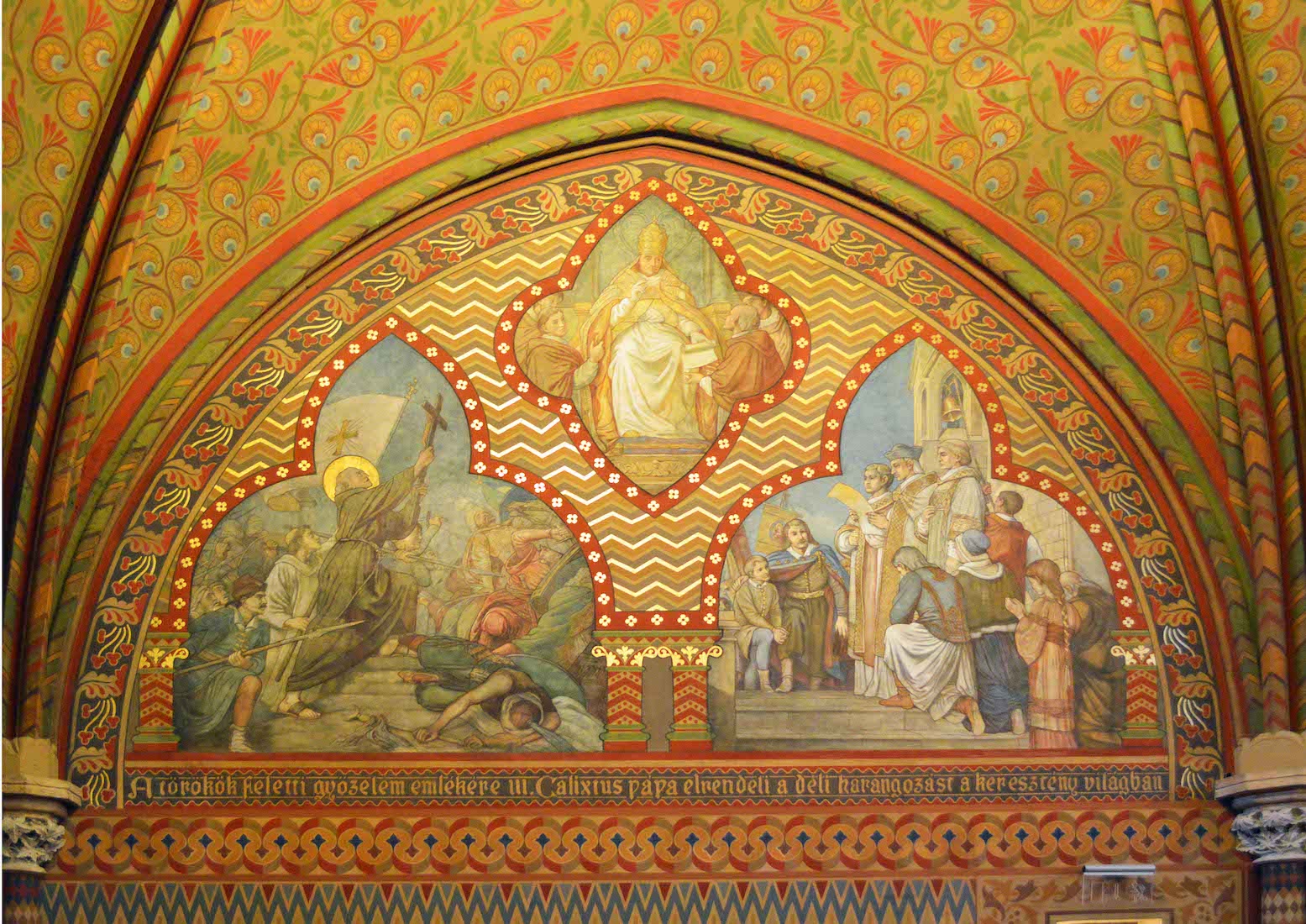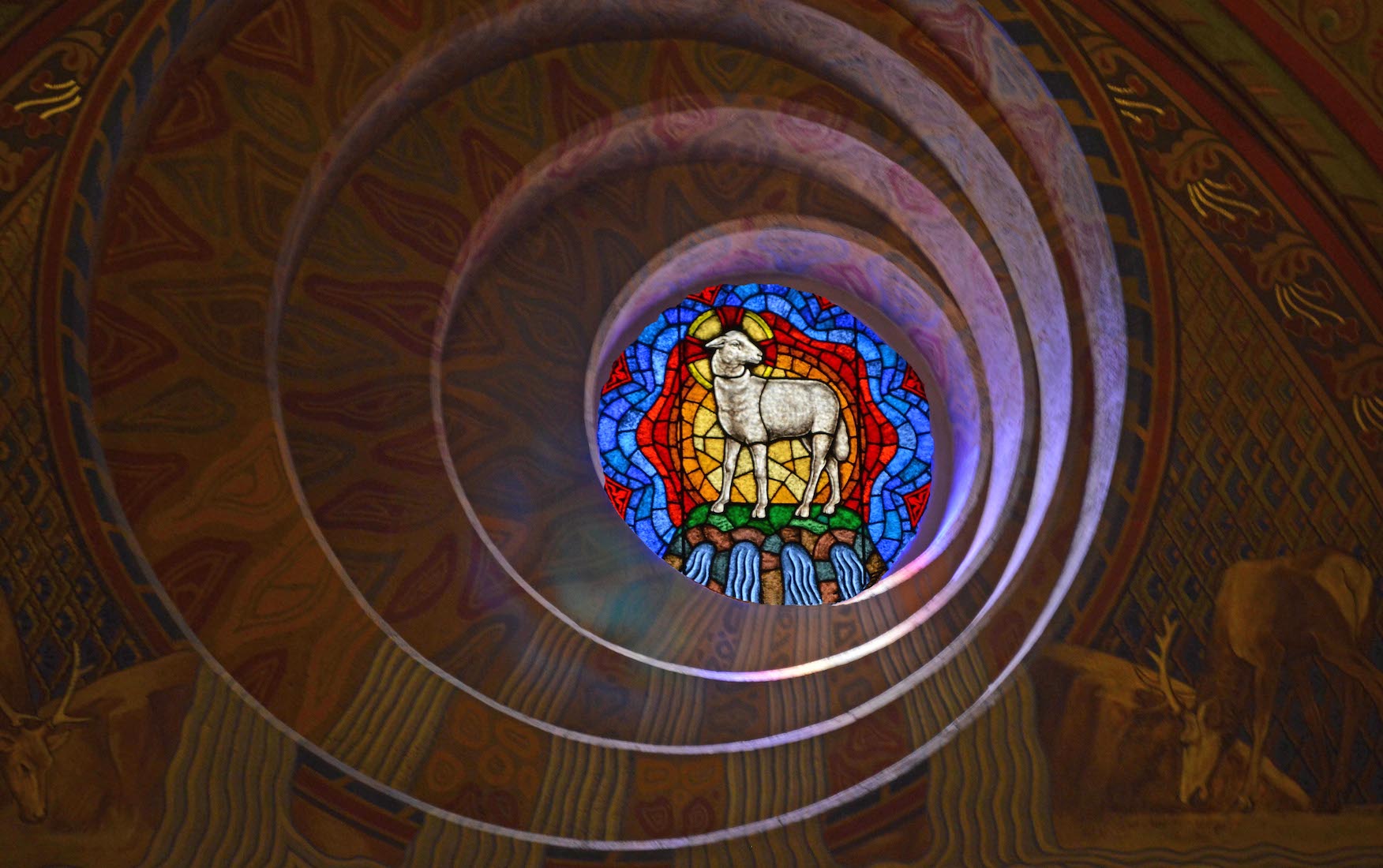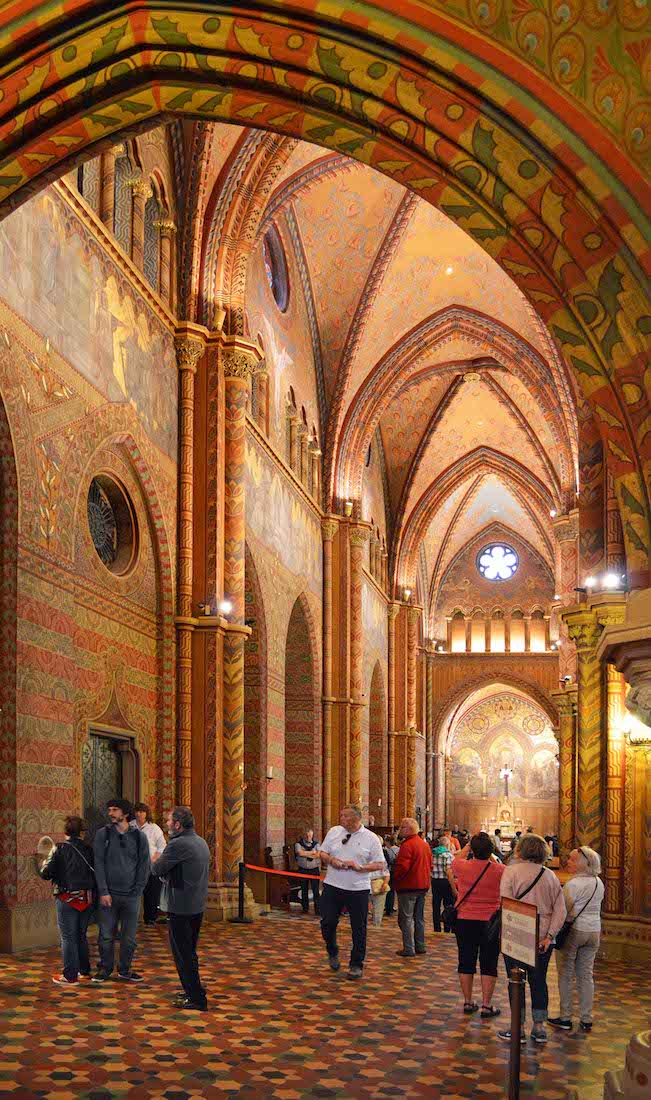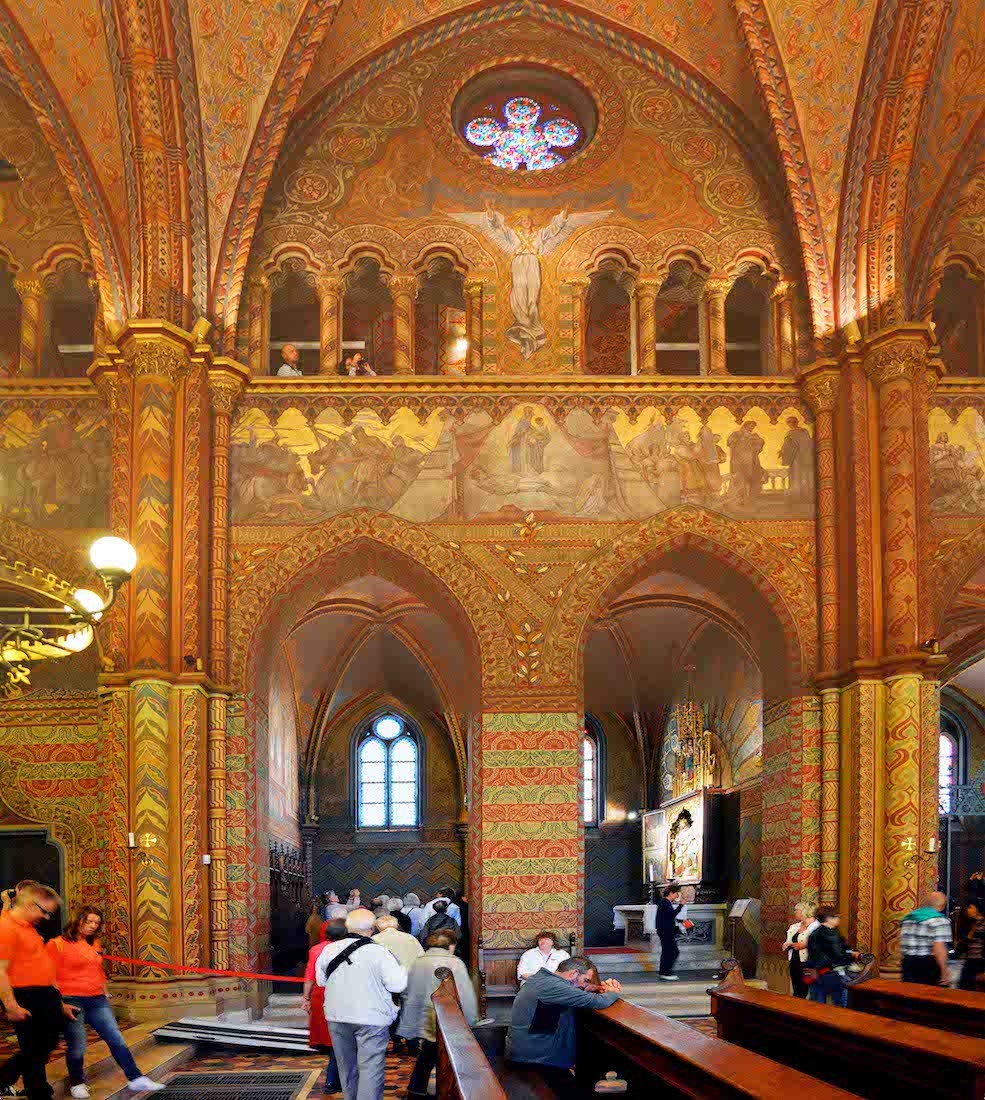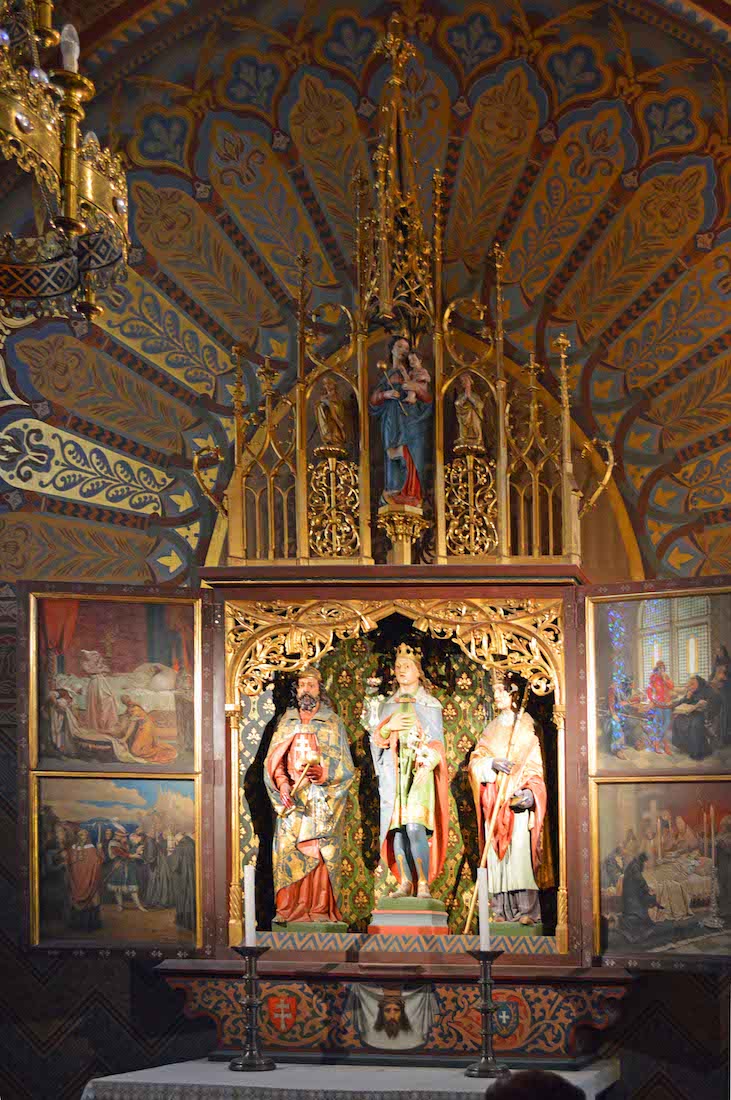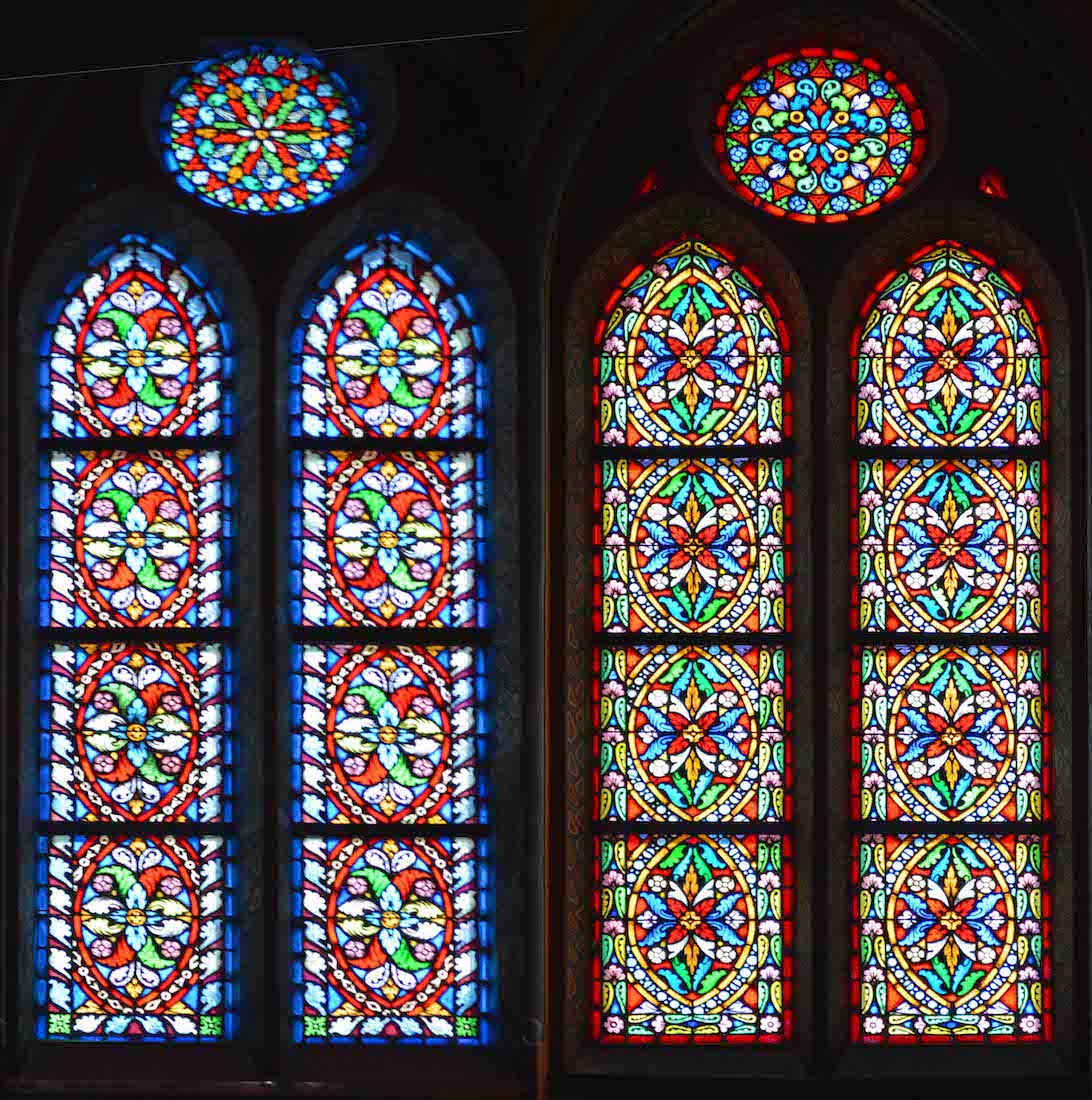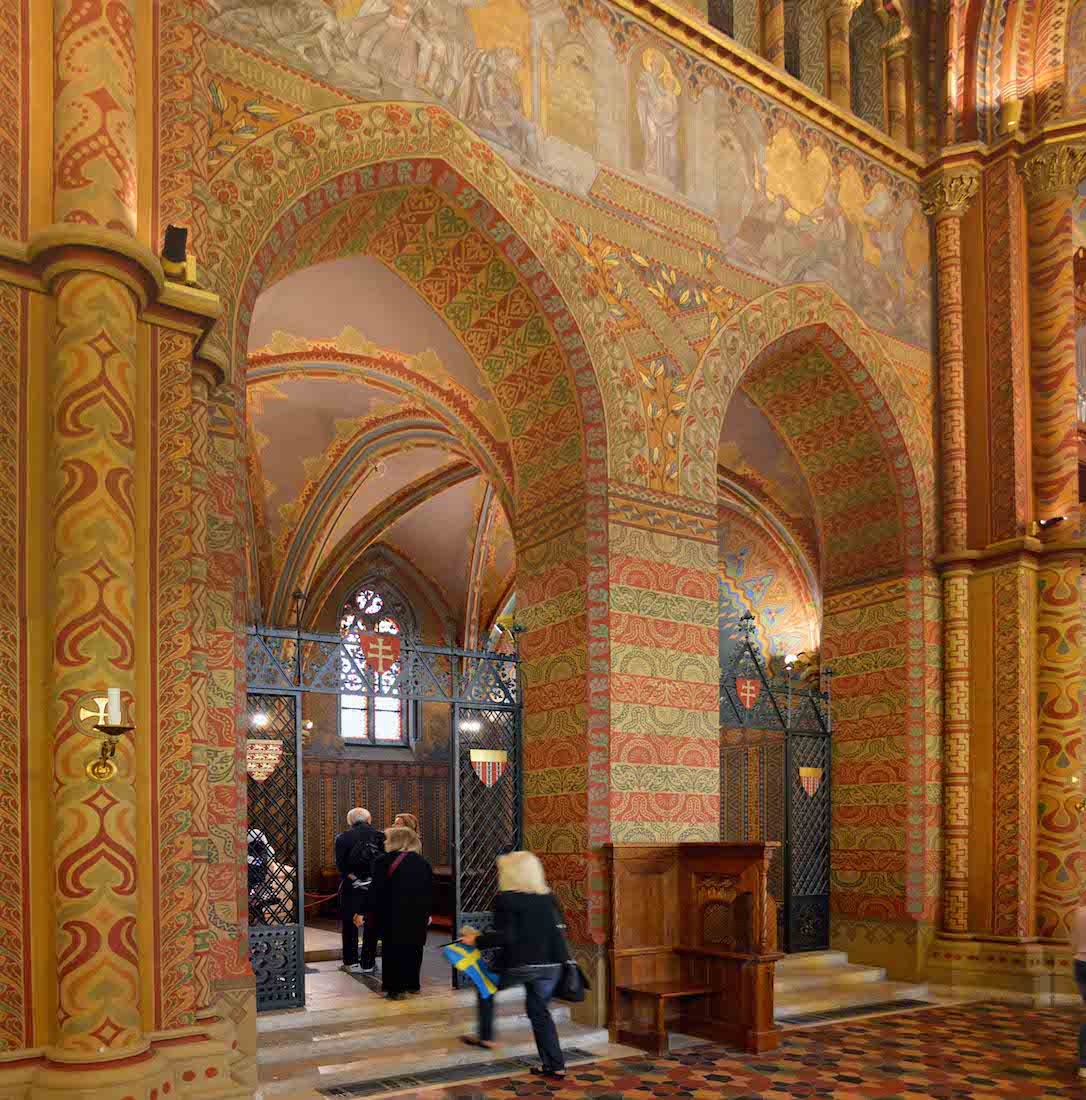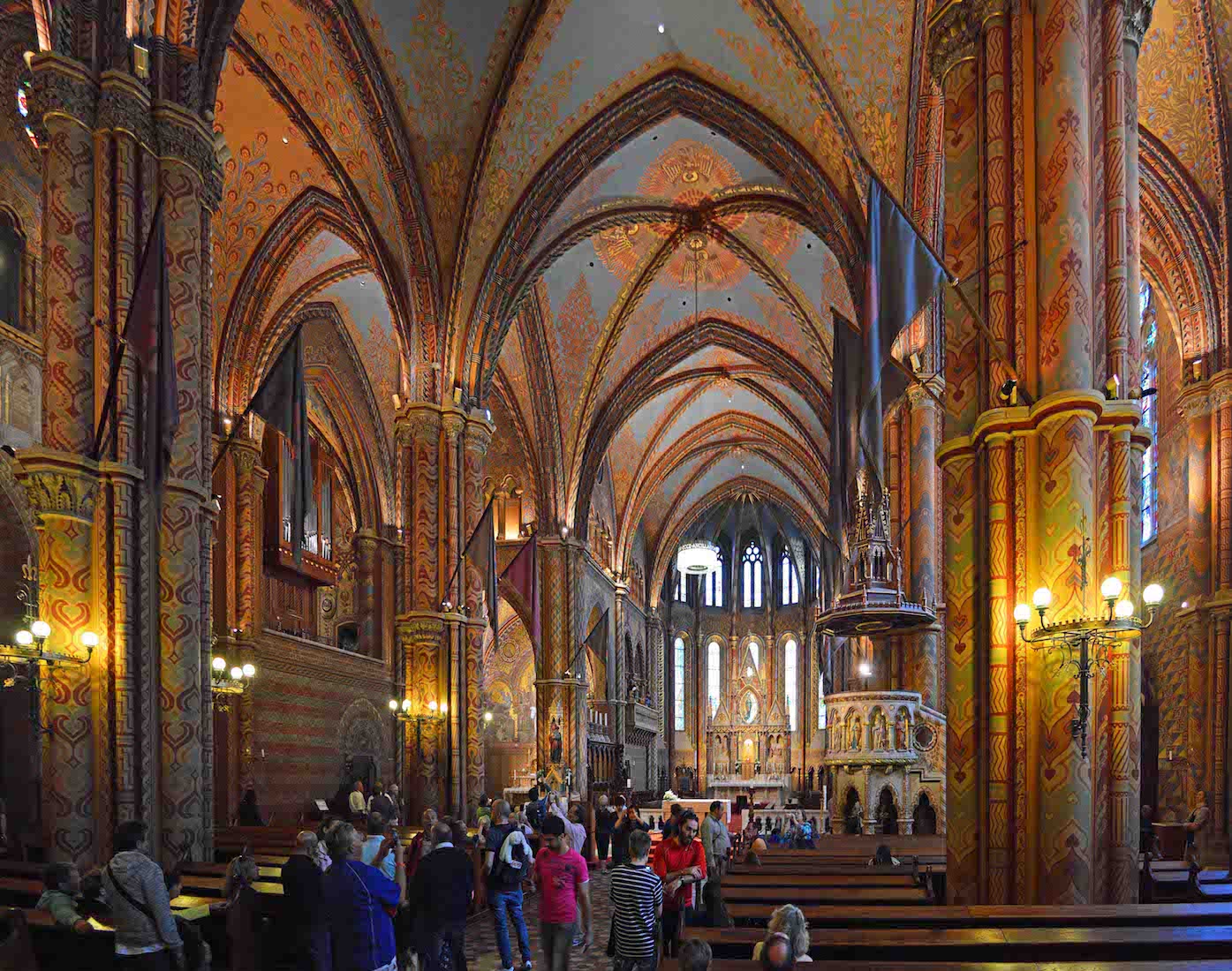
Now we arrive at the back of the Church and look down the nave: a glorious array of colour and design! On the left side are various chapels and a small organ, the large pulpit is ahead and to the right. The columns supporting the gothic arches each carry a pair of flags. PLAN
22. NAVE CEILING
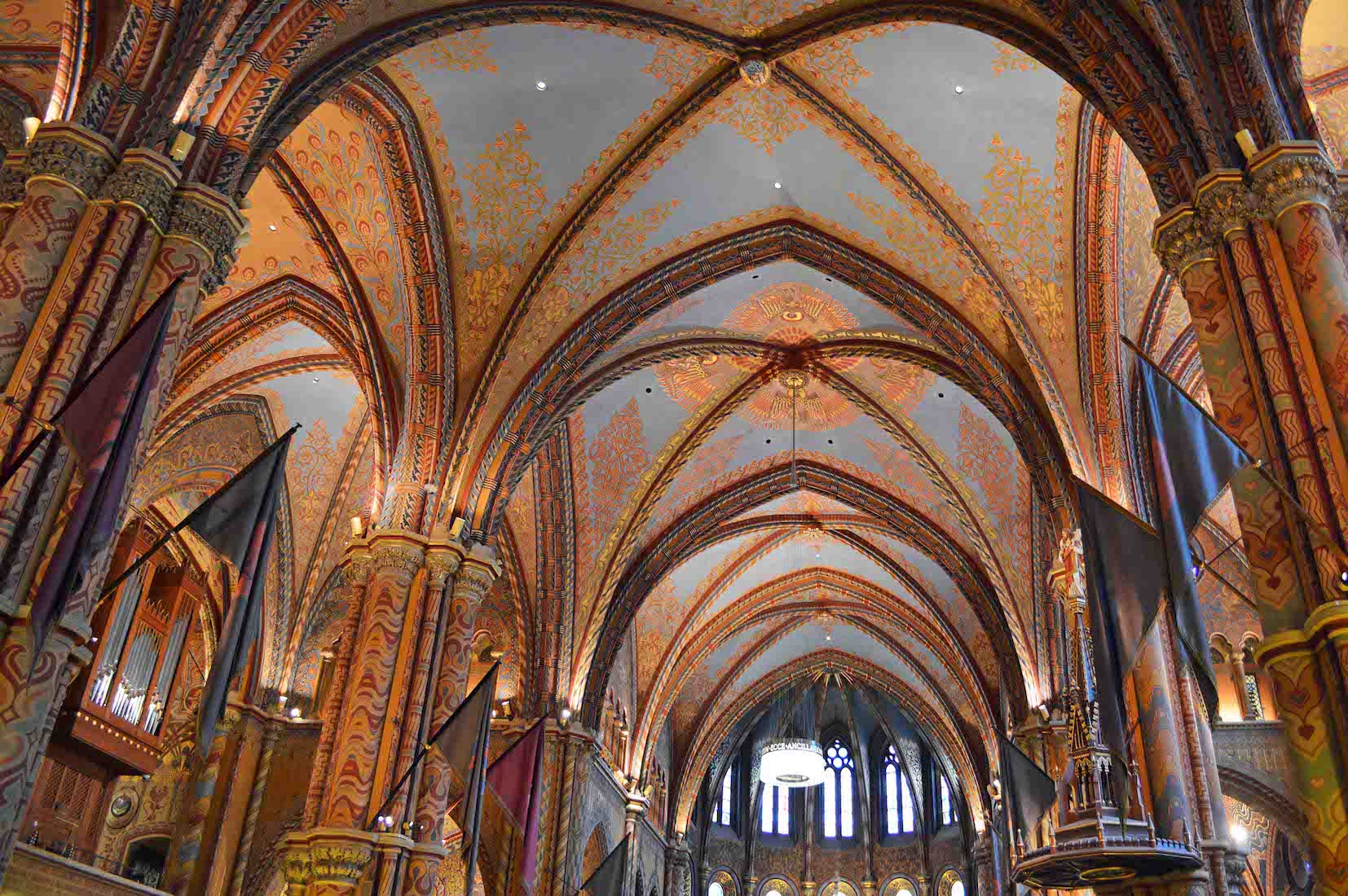
The ‘hall’ structure means that the main section of the nave is divided into nine ‘squares’, although the axial squares are elongated cross-ways. Each of the ribs is decorated with a linear pattern, and the vaulting between has a mainly floral design.
23. CEILING DETAIL
We take time to look at the detail of one of the ceiling panels, although it might take a lifetime to closely examine each part of this Church’s design!
24. WEST WALL
Looking to the West wall, we have at left steps up to St Mary’s door, with an elaborate design alongside. Straight ahead is the main West door. The arch at right leads through to the baptistry chapel.
25. THE MARY DOOR
The two walls by the Mary Door depicted here show two of the three cycles of the mysteries of the rosary. These are sacred moments from the life of Jesus and Mary from which the church evokes the crucial events of salvation history. At bottom right is the coat of arms of King Matthias – with raven!
26. WEST DOOR
The West entry opens inwards under the organ loft. There is a small door to the left which leads to the little Loreto Chapel in the base of the main tower. The right arch in this alcove opens to the baptistry which we can see to the right of this view.
27. THE KING’S ORGAN
The Church organ has a long history, but the Late Romantic style ‘King’s Organ’ was completed in 1909, and after several upgrades is still in use today. It is the largest musical instrument in Budapest with 7771 pipes in 111 registers.
28. THE WEST DOORS
The West doors are guarded by welcoming angels. We might ask why the doors are so plain!
30. LORETO CHAPEL ALTAR
This little room in which archaeologists found the jumbled remains of medieval burials is consecrated to the Blessed Virgin of Loreto. The Black Madonna statue on the altar is a copy which attained special value in 1921 when the original statue of Loreto was destroyed by fire.
31. BAPTISTRY
Directly across from the Loreto Chapel and under the Béla Tower is the baptistry. It exemplifies Bertalan Székely's conception of the Church as an integral work of art incorporating his figural images. Ahead is the font with fresco above, and at left is an interesting column capital and unusual round window.
32. FONT
There is so much to notice in Matthias Church that no one bothers describing the lovely font! Supported on a central pillar and surrounded by four lions, the font is encircled by a flowery frieze with four angels. It is capped by a fine wooden lid.
33. CAPITAL
This column capital was made by the craftsmen who completed the Church between 1260 and 1270. It depicts one hooded figure and one bearded figure, both pointing to the Bible. It is now Budapest’s oldest in situ stone carving.
34. BAPTISTRY FRESCO
On the wall behind the font, Károly Lotz’s historical triptych is a memorial to the Hungarian victory over the Ottoman empire at Nándorfehérvár (now Belgrade, Serbia) in 1456.
35. BAPTISTRY LAMB
The baptistry contains this wonderful round stained glass window featuring the Lamb of God. From there the four rivers of Eden flow – an allusion to baptism – and the drinking deer symbolise humanity thirsting for salvation.
36. NORTH AISLE
Leaving the baptistry we enter the North aisle with its vibrant colours and designs. The aisle separates the nave at right from two chapels opening to the left. Straight ahead is the Ladislaus Chapel.
38. ST EMERIC ALTAR
The altar triptych shows Prince Emeric at centre with his father Stephen at his right, and his guardian the evangelical bishop St Gellért to his left. Above is a statue of Our Lady of the Hungarians, wearing the Holy Crown of Hungary. The altarpiece was painted by noted painter and graphic artist of the time, Mihály Zichy.
39. EMERIC CHAPEL WINDOWS
The matching stained glass windows of the Emeric Chapel have a repeating floral theme.


